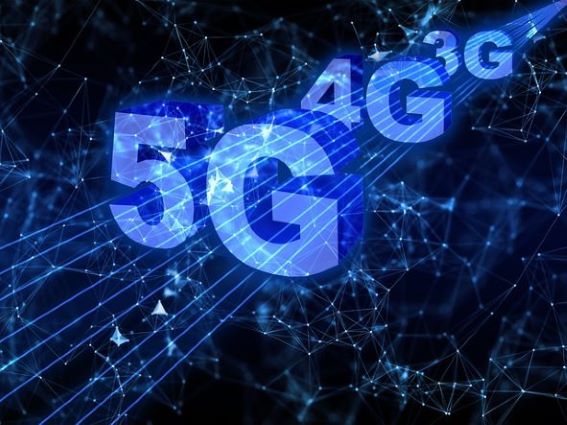How Much of the World is Covered by 4G: Truth and Myths Explored

Cellular networks are the backbone of modern society. They have been used in a variety of ways across the globe, but they are still struggling to keep up with their demand. As our data usage and demand for connectivity increase, cellular networks need to evolve in order to meet these demands.
4G is a technological advancement that has been with us for over a decade. It has changed the way we communicate and has made our lives easier.
4G is the fourth generation of wireless technology, which means the speed and bandwidth are faster than ever before. With that comes a lot more data, which is excellent news for people who want to use their devices to do more things.
There has been a lot of hype surrounding 4G technology, but it is an important step forward for this generation. The increased speed will enable people to do more things with their devices and get more out of their internet.
Introduction: What Is 4G?
The 4th generation of mobile technology is the most recent, and it was first released in 2009. It is also called 4G.
4G is a broad term covering many different technologies, such as Long Term Evolution (LTE) and Wi-Fi. The cellular network was developed to allow faster data transfer speeds and more stable connections. There are many different technologies that fall under the 4G umbrella, but these technologies all mainly rely on radio waves to transmit data.
Technology has advanced at an exponential rate in the past few decades. The advent of 4G created the use of all connected technologies to the same network. Each spectrum has a different technology, but they all work together to provide seamless wireless data access.
4G has been the most significant advancement in the mobile industry in recent years. It was introduced in 2009 and quickly changed everything about how phones were viewed.
How much of the world is covered by 4G?
By 2021, global 4G coverage was estimated to be 85%in the 4th quarter. This is an increase from 83% in the 3rd quarter of 2019.
With the advancement of 4G technology, there has been a marked change in the global population’s connectivity. The number of people covered by 4G networks has grown exponentially in the last few years and according to Jeremy Clifford, it is expected to hit 95 percent in 2027.
The Truths and The Myths
The 4G network is the most widely used wireless technology in the world. It has been a significant breakthrough in the telecom industry. However, there are many myths surrounding it which need to be debunked.
Myth: 4G is only available in developed countries
Truth: Many developing countries have adopted 4G technology, and they have achieved great success with it. In fact, some of these countries are among the top adopters of 4G technology in the world.
Myth: 4G signals can’t reach underground or deep underground areas
Truth: The signals can reach even deep underground regions as long as there is enough space for them to enter and spread out.
The Speed Difference between 3G & 4G Networks
This section will help you understand the difference between 3G and 4G networks and how they affect your daily life and performance.
The speed difference between 3G & 4G networks can be explained by the frequency bands they use:
3G is a type of cellular network that works in the frequency range of 1.8-2.1 GHz, while 4G is a type of cellular network that works in the frequency range of 2.3-2.7 GHz.
3G networks have been around for a while now, and they are still being used in many countries. However, 4G networks have taken over since they offer much faster speeds than 3G.
3G cell phone networks can only provide speeds up to about 14 Mbps, which is not good enough for the speeds we need today. On the other hand, 4G has much faster speeds of up to 500MBps (Mbps) or even more, depending on the device’s capabilities.
4G Vs. 5G: How Much of the World Will We Be Able To Cover in 20 Years?
5G is a new wireless standard that promises to offer faster and more reliable connections than 4G.
This is a question that we have been asking ourselves for years. It’s only recently, however, that we’ve started to see some concrete answers. The 5G revolution will be happening in the next two decades, and it will change our lives as much as the internet did in the previous 20 years.
The next generation of wireless networks, 5G, is just around the corner. It promises to deliver faster speeds and lower latencies than 4G.
The future of wireless networks is not as simple as 4G vs. 5G. We need to understand the difference between different wireless technologies and how they will affect our lives in 20 years.
Wireless technologies have been changing over the years and will continue to change into the foreseeable future. New wireless technologies are being rolled out regularly, and it is crucial to understand what they can do for us in the future.
Many of the world’s telecommunication providers are already working to provide 4G and 5G networks for every man, woman, and child to be connected. 4G is a network that is still being developed, while 5G is already in use. In 20 years, we will be able to have a much faster wireless connection than we currently do.
With the development of 5G, wireless speeds will be up to 10 times faster than what it currently is. This means that more people will have access to high-speed internet which can lead to a greater number of applications and services as well as more bandwidth for devices such as phones, laptops, and other gadgets.
Is There a Limit on the Size of the Cellular Network? Why or why not?
Cellular networks are designed to be flexible, meaning that they can be scaled up and down depending on the demand.
The limit of cellular network size is dependent on many factors, including the number of users, how much data is transferred per user, and whether or not a wireless tower is needed for a given location.
Cellular networks require a certain amount of space, which is measured in the number of antennas. This is due to the fact that radio waves need to be transmitted and received in a given area. Because the size of these antennas affects the overall size of a cellular network, this leads to limitations on how large these networks can become.
In recent years, we have seen different technologies that have constantly been growing, such as 4G and 5G. These technologies will also be reaching their limits concerning how much data they can handle. For example, 4G is usually used for less than 50MB/s of data transfer, while 5G can handle up to 1GB/s.
Conclusion: The Future is Bright for Cellular Networks
The future is bright for cellular networks. Even though the wireless industry is still in its infancy, it will grow and make a lot of progress in the coming years. The demand for cellular networks has been increasing day by day due to advancements in technology.
The future of cellular networks is bright because they are not just limited to mobile devices anymore. Still, they can now be used with other technologies like smartwatches, wearables, and TVs.
Some of the significant trends that will shape the future of cellular networks. These include:
1) The increase in 4G LTE coverage 2) The increase in mobile device penetration 3) The rise of IoT and smart cities 4) The increasing demand for high-speed data 5) The growth of artificial intelligence in the telecom sector.





